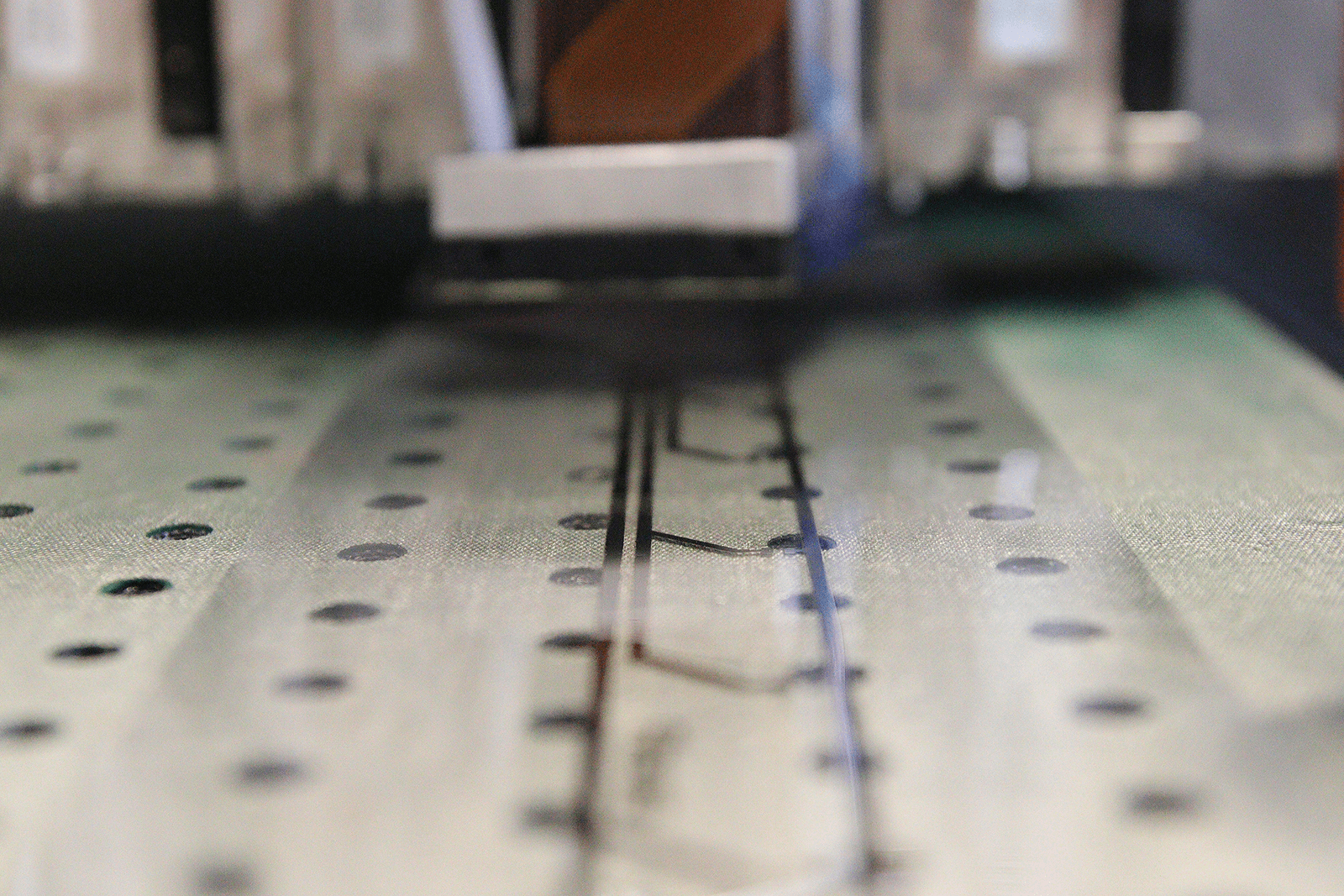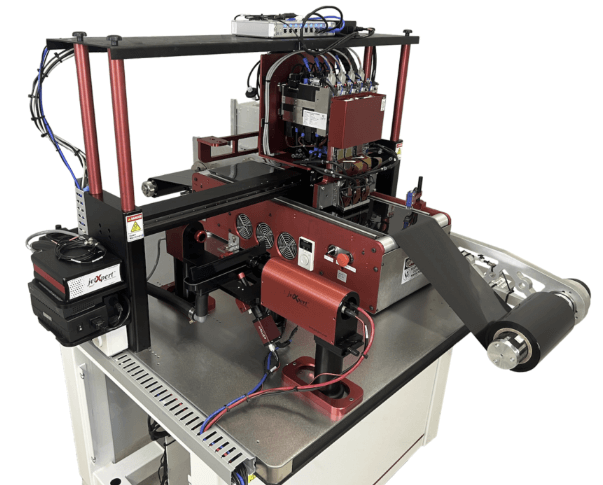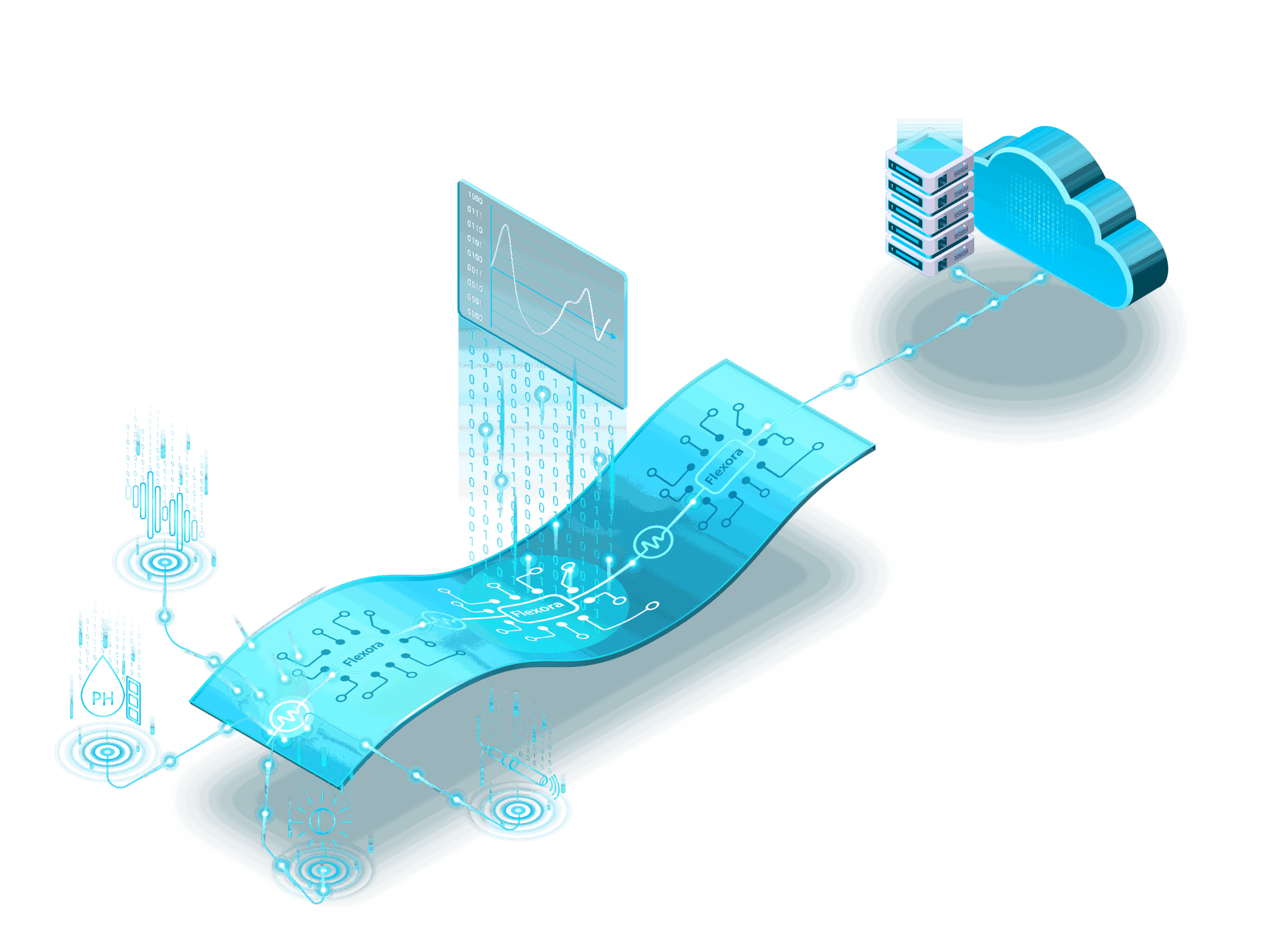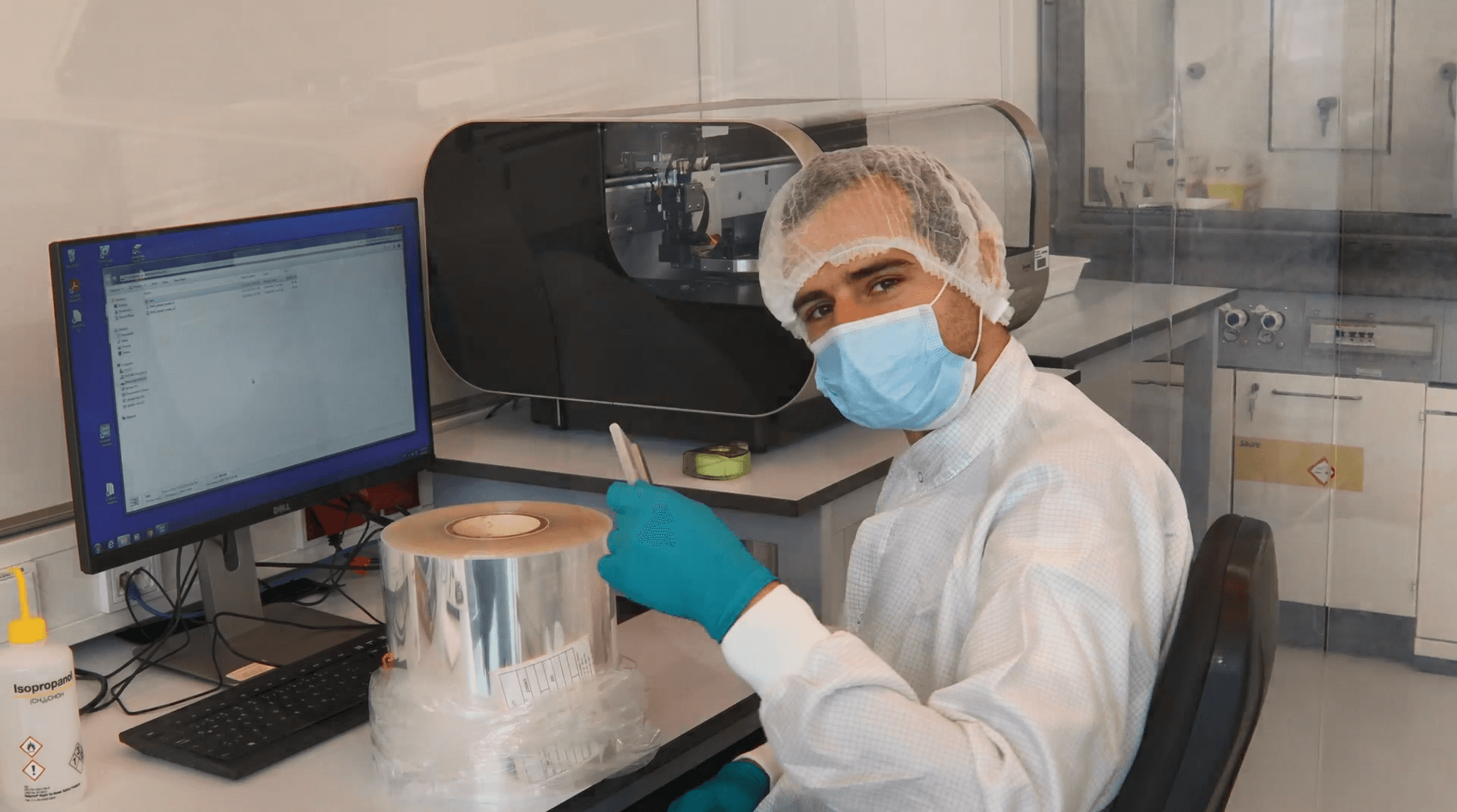INNOVATION THROUGH PRINTED ELECTRONICS
Smart surface for large-scale measurement of your equipments and infrastructure
Flexora develops innovative, ultra-thin and flexible sensor foils based on organic, printed electronics that serve as smart surfaces to monitor your equipment and infrastructure in real time.
This technology enables large-scale measurement of temperature, pressure, humidity, and other parameters for the first time – without complex installation or interference with existing systems.
What makes our technology unique?
Printed Electronics
At the heart of our technology is printed electronics. We use additive manufacturing techniques to apply electronic components directly onto flexible plastic films. The result: lightweight, thin, and flexible devices for a wide range of applications.
We rely on inkjet printing in a self-developed roll-to-roll process where we print onto flexible plastic substrates. This allows us to combine high throughput, low material costs, and freedom to change the layouts.
Thanks to low processing temperatures (< 200 °C), printed organic electronics are also significantly more energy-efficient than inorganic, silicon-based technologies. This energy efficiency makes our technology a more sustainable alternative.

Inside Flexora’s Technology – and the Advantages for You
Printed Electronics
Cost efficient due to low material consumption
Sustainable Manufacturing
Inkjet Printing
Flexible design via Drop-On-Demand delivery
Sensor type, density, and film shape can be customized individually
Roll-to-Roll Manufacturing
Fast and scalable

Smart Surface
Our flexible sensor films enable the creation of a digital twin for your equipment.
The sensor skin can be seamlessly applied to virtually any surface in under a minute – using adhesive strips or magnets – without affecting the functionality of your system.
Our technology transforms any surface into a smart surface, enabling continuous, remote, real-time monitoring, analysis, and optimization of your equipment and processes.
Large-scale Measurement
Unlike traditional sensors that measure at a single point and require complex installation, our sensor foils capture large-scale, relevant data.
Thanks to the high sensor density – up to 10,000 data points per m² – our technology enables unprecedented precision in large-scale monitoring. Flexora makes continuous monitoring of large-scale equipment economically feasible and easy for the first time. Even previously hard-to-reach areas are now easier to measure.

Innovating together
Our intelligent and flexible sensor foil opens up entirely new possibilities for large-scale monitoring.
Whether it’s sensor type, arrangement, or density – we find a solution that fits your needs.

